Slight deviation from strict chronological order, tonight: I have to switch forward to yesterday, before properly catching up with the story to date…
Tuesday 23rd was a good day. Our plan was simply to head to Salers (famous for it’s beef, but also a “plus beau village de France”) and look around, and have lunch at “Le Bailliage” a well-regarded hotel restaurant there.
The fast/straightest way to get there was essentially the same mountain pass, via Saint-Jacques-des-Blats, that we had used the day before to get to Tourmaline. Our host at La Roussière, Christian, had provided us with an alternative route, via Murat and the D3 and D680, which looked like fun. While he was explaining the route to me he did mention that one of the mountain passes was closed, which was a pity, but all I heard was that there was another, and that the road was very beautiful. So, off we went.
We were a bit surprised by how insistent the Garmin was about making a U-turn, as we headed north, but we expected that she would change her tune by the time we turned off the N122 and onto the D3. Well, we turned off to the D3 as expected, and still she complained, but we pressed on: the itinerary said that there was a coffee shop (the Alta Tera) with a great view up ahead, so we headed for it. Stopped for coffee a little before twelve: great view as advertised, and also great coffee. Headed off. Still the Garmin wanted us to make a U-turn and head all the way back via Saint-Jacques-des-Blats. Weird. I tried allowing her to take unpaved roads, thinking that perhaps there was a stretch of the D680 like that, and that was keeping her away from what was clearly the shorter route. No change.
Well, a bit further up the mountain we discovered the reason: the D680 was actually the road over the particular mountain pass that was currently closed (the Col de Payrol). Clearly it had been closed for long enough that the Garmin knew about it. The spot where the “route barrée” sign sat had a breathtaking view: snow-covered mountain peaks ahead, sunny spring valley falling away behind, so I’m glad we went there, but we had to get to Saler, so we had to go via the other pass. We turned around (five-point turn on a winding mountain road, at least safe in the knowledge that there would be no-one coming the other way, but cliff up and down on either side) and headed for the other pass. The other pass turned out to involve a massive detour to the north, essentially circumnavigating the mountain in the other direction. Going from 5 to 7 on the clock, the long way around, rather than the short. This took us via Riom-es-Montagnes, Valette, Trizac and Le Falgoux, among others.
It was a lovely mountain drive, all twisty one lane road with amazing views. We ended up at Saler at a quarter to two, so knowing by now that French restaurants often closed after the lunch sitting (usually around two) we went straight there, leaving exploring the village until after. Le Bailliage turned out to be on a road that was being re-cobble-stoned, so we entered to the sound of a stone saw, but they had room for us and we sat out in the sun on the balcony on the other side of the building, which was nice. Cath had some foi gras for entre and I had a local dish that was like a spicy zuchini slice but with prunes. Delicious. For mains Cath had the local steak and I had Coq-au-van, both served with the Auvergnes-local potato gratin with cheese on the side. I mention all of this because I really want to describe my Coq-au-van: I think that I have at last really had Coq-au-van! All previous dishes that I have had by that name, although delicious, were clearly chicken. When I first received my plate I thought that there had been a mistake: what I had was clearly some sort of braise of lamb, chopped bones and rich, dark sauce and all. The meat was dark coloured and fell from the bone the way a nicely cooked lamb chop would. But the bones were a bit too small to be lamb, and there clearly seemed to be “chicken skin” around the thigh-shaped pieces. So my conclusion was that this was something like rooster (or “Coq”), slow-cooked in a red-wine sauce: the real thing. With the truffade to help with the sauce, this was blood-thickening wonderfulness.
After lunch we had a lovely wander around Saler, which is indeed a picturesque village, with most buildings made from the black basalt rock that is used in the volcanic region. There were a lot more people, both tourists and locals than there had been in several other villages, but clearly most of the activity was tourist-related. The work of beef and cheese production must have been elsewhere.
Headed home via a little village called “Fontanges” that had an interesting chapel carved from a rock. Perhaps at one stage this was a cave, but now it is quite formal and decorated.
Back at La Roussière, dinner (table d’hote) was the long-sought Auvergne specialty of Aligot, served with a confit of pork with a little orange. Delicious. Only wish that I had not had such a lunch, so few hours beforehand.
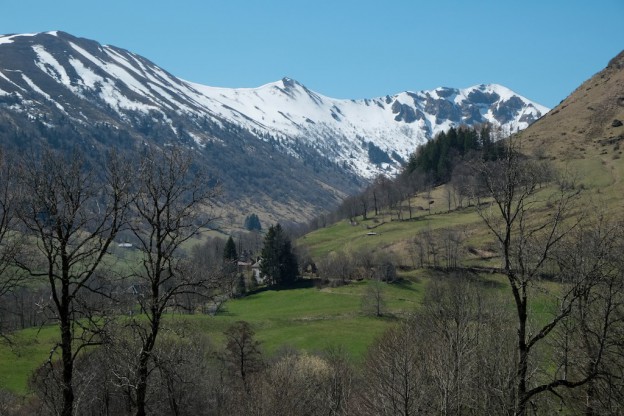
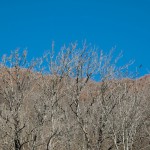
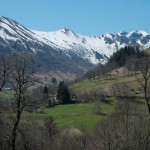
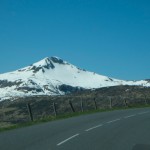
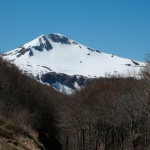
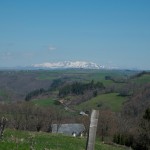
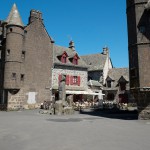
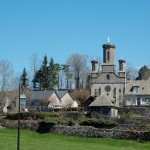
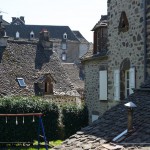
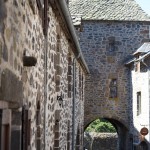
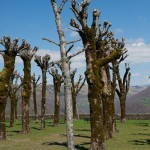
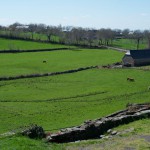
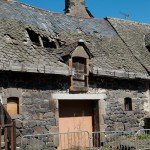
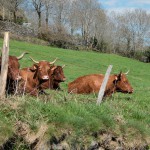
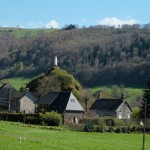
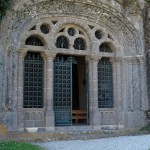
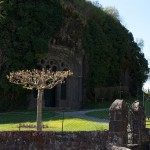
Comments
2 responses to “Of mountain passes closed and food of Cantal”
It sounds like a really nice way to go, but it also sure sounds like eating yourselves to death. Hope you’re finding some space for enjoying peace, countryside and the spaces between meals too 🙂
Every so often we tell ourselves that we’re eating for Australia (or at least Sydney), but it’s not like that really. We keep it simple most of the time (a shared plate of charcuterie and salad is often the go), and usually follow a restaurant lunch with nothing at all. Oh, and did we mention that France is full of mountains and hills? The countryside is indeed lovely.